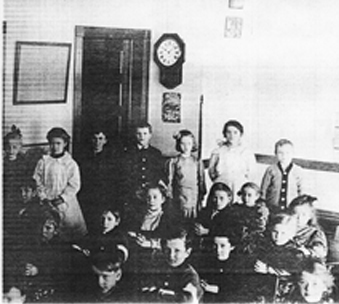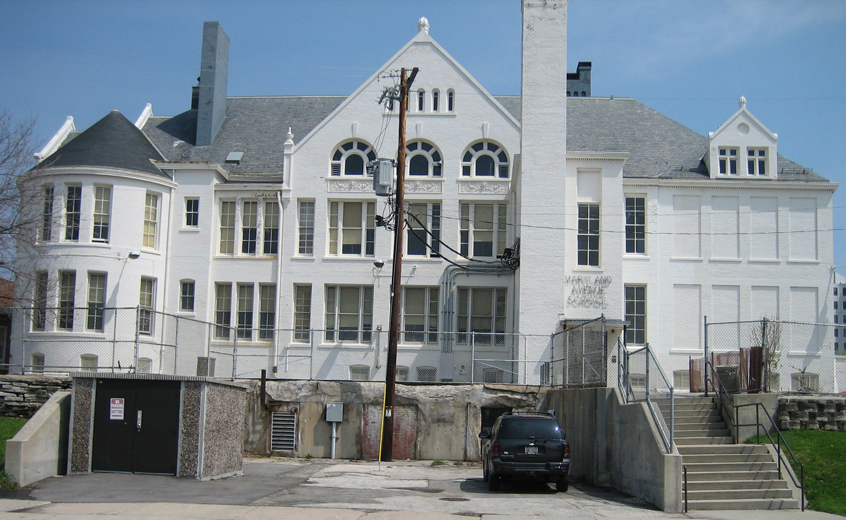Support appears in A Study of Simon Willard’s Clocks, by Richard W. Husher, “The use of the regulator on the many Connecticut spring driven wall clocks sometimes called ‘school clocks’ was only a ruse to encourage sales and such a clock must not be confused with a true regulator clock.”
We hung the repaired schoolhouse clock in our living room and it kept excellent time. After several months of winding and admiring it and enjoying its pleasant tick-tocking, it hit me like a bolt: Could this octagonally shaped, 19th century type of clock with the word “regulator” painted on the glass be the inspiration for the Allen-Bradley trademark?
Chances are the Bradley brothers, Lynde born in 1878 and Harry in 1885, would have seen clocks like this frequently when they were growing up and attending school. Adolph Fensholt, principal of the advertising agency they used for decades, also would have been familiar with schoolhouse clocks.
Most important, this type of clock fits well the science-oriented business the brothers built that was based on “regulating electricity” with all the precision of the finest timepieces.
In a history of the company that he wrote in serial form in 1935 for Gossip—and that was reprinted upon his death in 1942—Lynde, reminisced about how as a lad he was influenced by a textbook titled Electricity for Engineers, written by Charles Desmond.
He was loaned the book while a student at the 18th District School of Milwaukee (now the Maryland Avenue Montessori School) by a friend named Ralph Skidmore who, Bradley writes with a touch of cryptic humor, “was known to some of his intimates as Banyan, due to some interest he had inadvertently and carelessly shown in the course of his school work in connection with the tree bearing that name.”
According to Lynde, Banyan knew that he (Lynde) had a “boyish penchant for playing with electricity” and thought he would enjoy this book from “his older brother’s library.”
Lynde offers the following about a “brush regulator” described in Electricity for Engineers, which he says was “originally patented in 1880”:
“Reading about this regulator brought to my youthful mind for the first time that this variable contact resistance of carbon could be utilized for electrical control in other forms...On the strength of this knowledge I built what might be called the first Allen-Bradley rheostat.”
The American Heritage Dictionary defines rheostat as “a continuously variable electrical resistor used to regulate current.” Lynde later employed this early realization to build the first products of The Compression Rheostat Company, which was the forerunner of the Allen-Bradley Company.
Controlling electricity—regulating current—was the foundation of the company and ultimately led to a value of some $1.65 billion—the amount Rockwell paid for Allen-Bradley in 1985. It was achieved in just over eight decades.
Like many success stories, Allen-Bradley’s had humble beginnings. Lynde, who didn’t graduate from high school, recollected in his history:
“We had been paying out the doctor’s money for labor and material and I had been living on next to nothing. I got a little money from Doctor Allen now and then for personal use, but I asked him for as little as I could get along with, although I was certain he would give me any amount I asked for within his means. My clothes were about worn out and it appeared that we must either make some money or quit.”
Until the 1920s, in fact, the Allen-Bradley Company struggled. A book the firm published in the 1960s titled The Allen-Bradley Story comments on the quiet years leading up to the Roaring Twenties:

Schoolhouse clock in early 1900s
West Allis classroom.
Courtesy of West Allis Historical Society.

Milwaukee Grade School
Lynde Bradley attended this Milwaukee school in the late 1800s.
Photo by author.